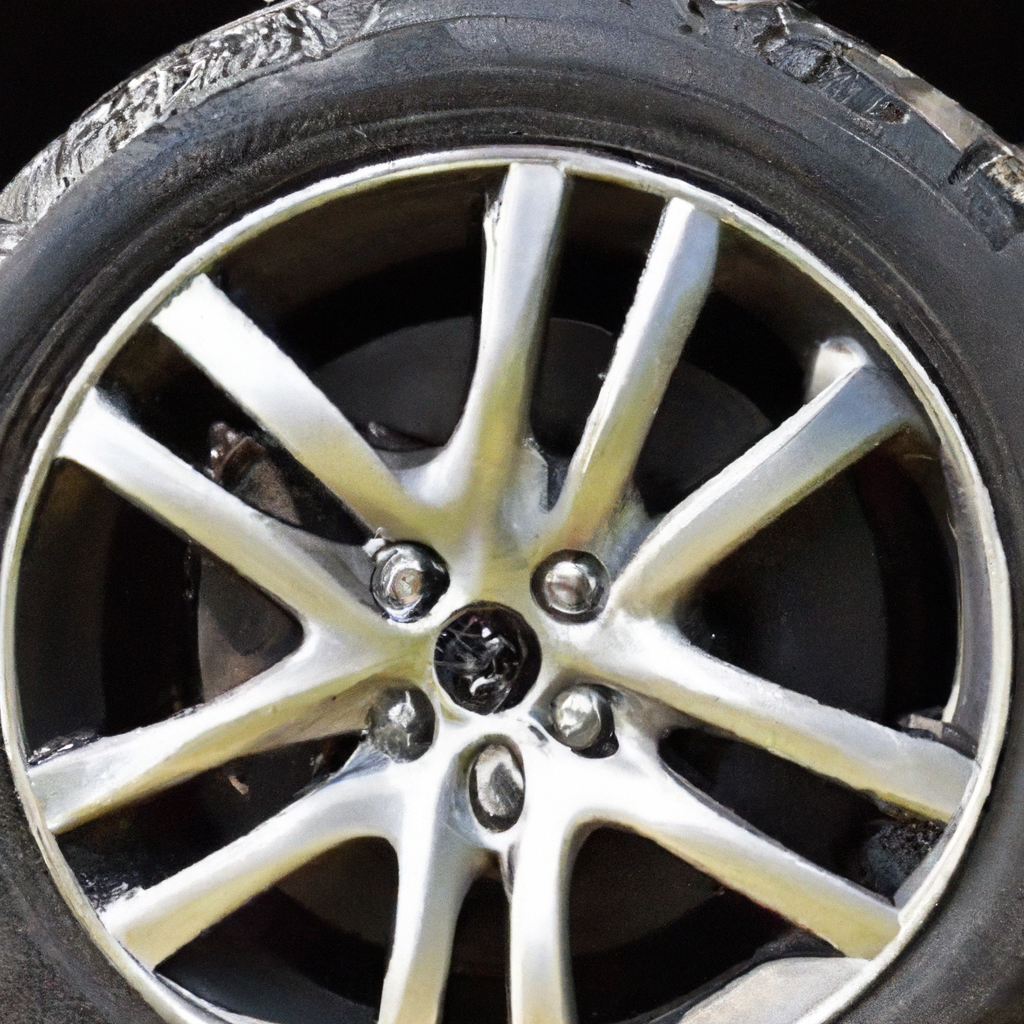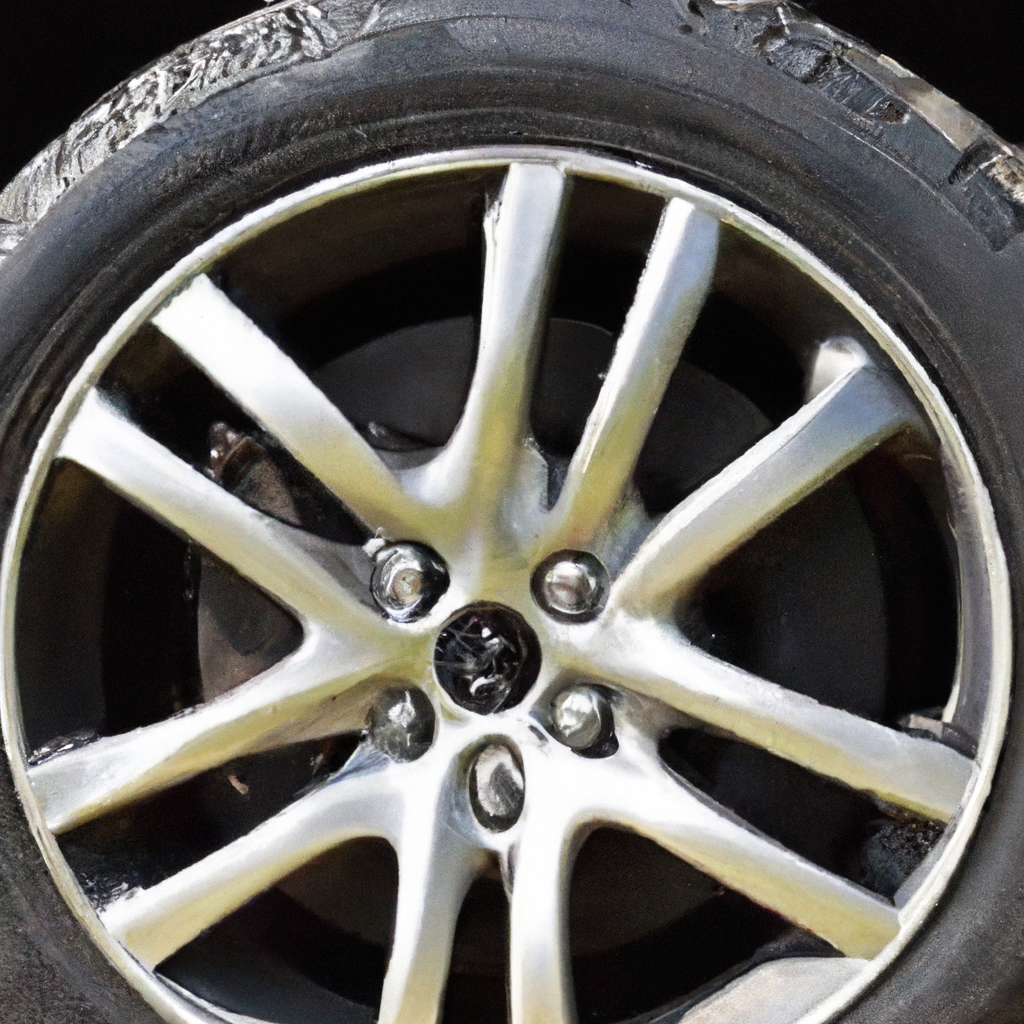If you’re someone who loves the thrill of sporty driving, you may have wondered whether run-flat tires are a suitable option for your vehicle. Run-flat tires, designed to keep you moving even after a puncture, have become increasingly popular in recent years. However, their unique construction and functionality raise questions about their compatibility with vehicles that prioritize nimble handling and performance. In this article, we’ll explore the potential benefits and drawbacks of using run-flat tires on cars with sporty handling requirements, helping you make an informed decision about the best tires for your driving style.

Understanding run-flat tires
Definition of run-flat tires
Run-flat tires are a type of tire that is specifically designed to allow a vehicle to continue driving even after experiencing a flat tire. These tires are built with reinforced sidewalls that are capable of supporting the weight of the vehicle even when there is a loss of air pressure. The reinforced sidewalls provide added support and allow for continued driving at a reduced speed for a limited distance, typically around 50 miles.
How run-flat tires work
Run-flat tires work by utilizing their reinforced sidewalls to maintain tire functionality even after a puncture or loss of air pressure. The design of these tires allows the tire to support the weight of the vehicle, preventing it from collapsing onto the rim. This allows the driver to continue driving to a safe location or a nearby tire repair shop without having to immediately change the flat tire.
When a run-flat tire experiences a loss of air pressure, the reinforced sidewalls provide enough structure and support to keep the tire in contact with the road. This ensures that the vehicle maintains control and stability. The ability to drive on a flat tire is made possible by the run-flat tire’s unique structure and the added support from the reinforced sidewalls.
Advantages of run-flat tires
Run-flat tires offer several advantages that make them a popular choice among vehicle owners. One of the main advantages is the enhanced safety they provide. In the event of a tire puncture, run-flat tires allow the driver to continue driving to a safe location without having to stop on the side of the road to change the tire. This reduces the risk of accidents and provides a sense of security for the driver.
Another advantage of run-flat tires is the convenience they offer. With a traditional tire, a flat tire often means having to wait for assistance or changing the tire yourself, which can be time-consuming and inconvenient. Run-flat tires eliminate the need for immediate tire changes, allowing you to continue driving until you reach a suitable location for tire repair or replacement.
Disadvantages of run-flat tires
While run-flat tires offer numerous benefits, they also have some disadvantages that should be taken into consideration. One of the main disadvantages is the limited range and speed at which they can be driven when flat. Most run-flat tires are designed to be driven at reduced speeds of around 50 miles per hour for a distance of approximately 50 miles. This limited range and speed can be a drawback, especially if the nearest repair shop or safe location is further away.
Another disadvantage is the potential impact on ride comfort. Run-flat tires often have a stiffer sidewall compared to regular tires, which can result in a harsher ride. The stiffer sidewall provides the necessary support to drive on a flat tire, but it can also lead to a less comfortable driving experience. This may be a concern for drivers who prioritize comfort over the added safety and convenience of run-flat tires.
Sporty handling requirements in vehicles
Definition of sporty handling
Sporty handling refers to the characteristics and performance attributes of a vehicle that allow it to navigate corners and curves with precision, agility, and responsiveness. Vehicles with sporty handling are designed to provide a heightened level of driver engagement and ensure a dynamic driving experience. These vehicles typically prioritize performance and handling over other factors such as comfort or fuel efficiency.
Importance of sporty handling in vehicles
Sporty handling is an important aspect for enthusiasts and drivers who seek an exhilarating driving experience. Vehicles with sporty handling capabilities offer improved stability, enhanced cornering abilities, and responsive steering. These qualities allow the driver to have better control over the vehicle and enjoy a more engaging and enjoyable drive.
Sporty handling is often associated with high-performance vehicles, such as sports cars or performance-oriented sedans. However, it can also be found in other types of vehicles, including certain SUVs and hatchbacks, where manufacturers aim to provide a dynamic driving experience to their customers.
Characteristics of vehicles with sporty handling requirements
Vehicles with sporty handling requirements have specific characteristics that contribute to their performance-oriented nature. These characteristics include:
-
Responsive steering: Vehicles with sporty handling require precise and responsive steering systems. This allows the driver to quickly and accurately control the direction of the vehicle, enhancing the overall driving experience.
-
Balanced weight distribution: Sporty vehicles are often designed with a balanced weight distribution, typically achieved by positioning the engine closer to the center of the vehicle. This helps improve the vehicle’s stability during cornering and enhances its overall handling capabilities.
-
Stiff suspension: Sporty vehicles typically feature stiffer suspension systems to minimize body roll and improve handling. The stiffer suspension allows for better control and responsiveness, particularly during aggressive driving maneuvers.
-
Low center of gravity: Vehicles with sporty handling characteristics are often engineered with a lower center of gravity. This lowers the vehicle’s body height, reducing weight transfer during cornering and enhancing stability.
-
High-performance tires: Sporty vehicles are often equipped with high-performance tires that offer improved grip and traction. These tires are designed to provide optimal performance during high-speed maneuvers and enhanced handling capabilities.
-
Aerodynamic design: Many sporty vehicles feature aerodynamic enhancements such as optimized airflow, spoilers, and diffusers. This helps reduce drag, improve stability, and enhance overall handling at higher speeds.
Compatibility of run-flat tires with sporty handling
Factors affecting sporty handling in vehicles
Several factors can influence the sporty handling characteristics of a vehicle. These factors include:
-
Suspension system: The suspension system plays a vital role in a vehicle’s handling performance. The design and tuning of the suspension system can significantly impact how a vehicle responds to driver inputs and tackles corners. The suspension system must strike a balance between comfort and performance, taking into account factors such as spring rates, shock absorber characteristics, and anti-roll bar stiffness.
-
Weight distribution: The distribution of weight within a vehicle affects its handling. Ideally, a vehicle with a balanced weight distribution will have improved stability and a more neutral handling feel. Too much weight concentrated towards the front or rear of the vehicle can negatively impact handling by affecting traction and responsiveness.
-
Steering system: The type of steering system employed in a vehicle can greatly influence its handling capabilities. Electric power steering (EPS) systems are often used in modern vehicles due to their ability to provide precise control and adjustable settings. The responsiveness and feedback provided by the steering system play a crucial role in delivering a sporty driving experience.
-
Chassis rigidity: The rigidity of a vehicle’s chassis affects its handling and responsiveness. A rigid chassis provides a solid foundation for the suspension system to work effectively, translating driver inputs into precise movements. Improvements in chassis rigidity can enhance the overall sporty handling characteristics of a vehicle.
-
Tire grip and performance: The performance and grip provided by the tires are critical factors in determining a vehicle’s handling capabilities. High-performance tires with advanced rubber compounds and tread patterns are designed to provide maximum grip, better traction, and improved cornering abilities. The quality and condition of the tires directly impact a vehicle’s handling performance.
Effect of run-flat tires on sporty handling
The use of run-flat tires can have some impact on a vehicle’s sporty handling characteristics. As mentioned earlier, run-flat tires typically have stiffer sidewalls to ensure they can support the weight of the vehicle in the event of a puncture. This stiffness can affect the overall compliance and responsiveness of the tire, which may be felt by the driver during aggressive cornering or abrupt maneuvers.
The stiffer sidewalls of run-flat tires can result in a slightly harsher ride compared to regular tires. This may lead to a reduction in ride comfort, especially on rough or uneven road surfaces. For drivers who prioritize comfort over performance, the slight compromise in ride quality may be a drawback when using run-flat tires.
However, it is important to note that advancements in tire technology have allowed manufacturers to create run-flat tires that provide an improved balance between ride comfort and performance. Some modern run-flat tire models offer enhanced sidewall construction and improved tread designs, resulting in better overall handling characteristics.
Performance trade-offs with run-flat tires
While run-flat tires offer the advantage of allowing a vehicle to continue driving after a flat tire, there are some performance trade-offs associated with their use. The stiffer construction of run-flat tires can negatively affect overall ride comfort, as mentioned earlier. Additionally, the increased weight of run-flat tires due to their reinforced sidewalls can potentially impact the handling and fuel efficiency of a vehicle.
The added weight of run-flat tires can result in increased rolling resistance, which can lead to reduced fuel efficiency. This can be a concern for sporty vehicle owners who prioritize performance and efficiency. However, advancements in tire technology have helped manufacturers reduce the weight of run-flat tires, minimizing these performance trade-offs.
It is worth noting that the performance trade-offs associated with run-flat tires may be less noticeable in vehicles specifically designed and optimized for their use. Manufacturers that equip their vehicles with run-flat tires often take into consideration the specific characteristics and requirements of these tires, ensuring that the vehicle’s suspension and overall performance are tailored to maximize the benefits of run-flat technology.
Benefits of using run-flat tires for sporty vehicles
Extra safety and convenience
One of the main benefits of using run-flat tires for sporty vehicles is the extra safety and convenience they provide. In the event of a tire puncture, run-flat tires allow the driver to continue driving to a safe location without the need to stop and change the tire immediately. This can be particularly beneficial in situations where stopping on a busy road or unfamiliar area may pose a safety risk.
The ability to continue driving on a flat tire provides peace of mind to sporty vehicle owners, especially when driving in remote areas or at night. It eliminates the inconvenience and potential danger associated with changing a tire on the side of the road. This extra safety and convenience can be a significant advantage for sporty vehicle owners who value their personal safety and want to ensure a seamless driving experience.
Reduced weight and increased performance
Run-flat tires have evolved over the years, with manufacturers focusing on reducing the weight of these tires without compromising their functionality. The lighter weight of modern run-flat tires can contribute to improved overall performance in sporty vehicles. With reduced unsprung weight, the vehicle’s suspension system can work more efficiently, leading to improved handling, responsiveness, and acceleration.
The reduced weight of run-flat tires can also result in better fuel efficiency. As fuel efficiency is a concern for many sporty vehicle owners, the lighter weight of run-flat tires can provide a slight advantage in terms of overall fuel consumption. This can be particularly beneficial for drivers who want to maximize the performance potential of their sporty vehicles while still maintaining a decent level of fuel efficiency.
Improved stability and cornering capabilities
One of the key characteristics of sporty vehicles is their ability to provide heightened stability and enhanced cornering capabilities. The unique design and construction of run-flat tires can contribute to these qualities, further enhancing the sporty handling of the vehicle.
The reinforcement in the sidewalls of run-flat tires provides extra support and rigidity, reducing sidewall flex during high-speed maneuvers or aggressive cornering. This results in improved stability and better response to driver inputs, allowing for more precise and confident handling.
Additionally, run-flat tires often feature advanced tread designs and rubber compounds that optimize grip and traction. This can further improve the vehicle’s cornering capabilities, allowing it to maintain better control and stability during sharp turns or spirited driving. The combination of the reinforced sidewalls and the enhanced grip provided by run-flat tires can result in an overall improvement in the sporty handling characteristics of the vehicle.

Challenges and limitations when using run-flat tires for sporty vehicles
Limited tire selection and availability
While the popularity of run-flat tires has grown over the years, the selection and availability of these tires may still be limited compared to regular tires. Run-flat tires are specialized products that require specific manufacturing processes and materials, which can result in a narrower range of tire options.
Sporty vehicle owners who prefer the use of run-flat tires may find themselves with fewer options in terms of tire brands, models, and sizes. This can limit the ability to find the perfect tire that offers the desired combination of performance, handling, and comfort. Limited tire selection can be a drawback for sporty vehicle owners who value having a wide range of tire choices to cater to their specific needs and preferences.
Possible impact on ride comfort
As mentioned earlier, the stiffer sidewalls of run-flat tires can result in a slightly harsher ride compared to regular tires. While advancements in tire technology have helped mitigate this issue to some extent, certain sporty vehicle owners may still find the ride comfort compromised when using run-flat tires.
The stiffer sidewalls of run-flat tires can transmit more road imperfections and vibrations to the cabin, potentially reducing overall ride comfort. This may be more noticeable on rough or uneven road surfaces. Sporty vehicle owners who prioritize a smooth and comfortable ride may find that run-flat tires do not provide the desired level of comfort compared to regular tires.
Increased cost and maintenance requirements
Run-flat tires often come at a higher cost compared to regular tires. The specialized construction and materials used in run-flat tires contribute to their higher price tag. This can be a consideration for sporty vehicle owners who are on a budget or prefer to prioritize cost-effectiveness.
Furthermore, the maintenance requirements for run-flat tires can be more stringent compared to regular tires. Due to their unique construction, run-flat tires require regular inspections and maintenance to ensure their integrity and functionality. Periodic checks for any signs of damage, wear, or loss of air pressure are necessary to ensure the continued safety and performance of run-flat tires. This additional maintenance effort may be a drawback for sporty vehicle owners who prefer a more hassle-free and low-maintenance tire option.
Factors to consider when choosing run-flat tires for sporty vehicles
Tire construction and design
When choosing run-flat tires for sporty vehicles, it is important to consider the tire’s construction and design. Look for tires that offer a good balance between ride comfort and performance. Modern run-flat tires often feature advanced sidewall constructions and tread designs that offer improved handling and grip without sacrificing ride comfort excessively. Consider opting for tires that have received positive reviews and feedback from other sporty vehicle owners to ensure the desired combination of performance and comfort.
Speed and load rating
Another important factor to consider is the speed and load rating of run-flat tires. Sporty vehicles are often designed to achieve higher speeds, so it is crucial to choose run-flat tires that are capable of supporting the desired speed rating. Additionally, consider the load rating of the tires to ensure they can handle the weight of the vehicle and any additional load that may be carried.
Compatibility with vehicle’s suspension system
The compatibility of run-flat tires with a vehicle’s suspension system can greatly impact the overall sporty handling capabilities of the vehicle. Consider consulting with a specialized tire shop or vehicle manufacturer to ensure that the chosen run-flat tires are compatible with the suspension system. This will help ensure that the tires work harmoniously with the vehicle’s suspension setup, optimizing the sporty handling characteristics.
Driving conditions and usage patterns
Consider the typical driving conditions and usage patterns when selecting run-flat tires for a sporty vehicle. If the vehicle is primarily used for spirited driving on well-maintained roads and tracks, a higher-performance run-flat tire may be suitable. On the other hand, if the vehicle is used for a mix of daily commuting and occasional aggressive driving, a run-flat tire that offers a good balance between performance and comfort may be more appropriate.

Recommended run-flat tire options for vehicles with sporty handling
Popular run-flat tire brands
Several popular tire brands offer run-flat tire options suitable for sporty vehicles. Some of the well-regarded brands in this category include:
-
Michelin: Michelin offers a range of run-flat tire options that provide enhanced performance and sporty handling.
-
Bridgestone: Bridgestone is known for its high-performance run-flat tire models, offering excellent grip and stability.
-
Continental: Continental produces run-flat tires that offer a good balance between performance and comfort, making them suitable for sporty vehicles.
-
Pirelli: Pirelli specializes in high-performance tires, including run-flat options that are ideal for sporty vehicles.
Specific tire models suitable for sporty vehicles
Consider the specific tire models that have been positively reviewed for their sporty handling characteristics when choosing run-flat tires for a sporty vehicle. Some recommended run-flat tire models suitable for sporty vehicles include:
-
Michelin Pilot Sport 4S Run-Flat: These tires offer excellent grip, precise handling, and enhanced performance for sporty vehicles.
-
Bridgestone Potenza S001 RFT: Designed for high-performance applications, these run-flat tires provide responsive handling and superior cornering abilities.
-
Continental ContiSportContact 5P SSR: These run-flat tires offer a good balance between performance and comfort, making them suitable for sporty vehicles.
-
Pirelli P Zero Run-Flat: These tires are renowned for their sporty handling capabilities, delivering excellent grip and stability during high-speed maneuvers.
Choosing the right run-flat tire for a sporty vehicle requires considering the specific needs and preferences of the driver, as well as the vehicle’s design and suspension system. Consulting with tire professionals or seeking recommendations from other sporty vehicle owners can help in making an informed decision.
Installation and maintenance considerations
Proper installation and alignment procedures
Proper installation and alignment are crucial to ensure the optimal performance and longevity of run-flat tires. When installing run-flat tires, it is important to follow the manufacturer’s guidelines and specifications. This includes ensuring that the tires are mounted correctly, the rims are in good condition, and the tire is securely attached to the wheel.
Proper wheel alignment is also essential for maximizing the performance and lifespan of run-flat tires. Incorrect wheel alignment can result in uneven wear and reduced handling capabilities. Regular maintenance, including wheel alignments at recommended intervals, should be carried out to ensure the tires perform as intended.
Regular tire maintenance and inspections
Regular tire maintenance and inspections are vital to ensure the continued safety and performance of run-flat tires. Inspecting the tires for signs of damage, wear, or loss of air pressure should be conducted at regular intervals. This can help identify any potential issues early on and prevent the risk of tire failure or compromised performance.
Maintaining the proper tire pressure is crucial for run-flat tires, as it directly influences their ability to support the vehicle’s weight in the event of a puncture. Regularly checking and adjusting tire pressure according to the manufacturer’s recommendations is important to optimize the performance and lifespan of run-flat tires.

Alternative tire options for sporty vehicles
Non-run-flat performance tires
For sporty vehicle owners who prioritize performance and ride comfort over the added safety and convenience of run-flat tires, non-run-flat performance tires are a viable alternative. Non-run-flat performance tires often offer improved ride comfort, as they typically have softer sidewalls compared to run-flat tires.
Non-run-flat performance tires can provide a smoother and more comfortable ride, making them ideal for sporty vehicles used primarily for daily driving or long-distance travel. These tires offer excellent grip and handling characteristics, allowing the driver to enjoy a dynamic and engaging driving experience without compromising on ride comfort.
Hybrid run-flat/non-run-flat tire options
Another alternative for sporty vehicle owners is hybrid run-flat/non-run-flat tire options. Hybrid tires combine the benefits of run-flat technology with the ride comfort and handling characteristics of non-run-flat tires. These tires are designed to provide the safety and convenience of run-flat technology while offering improved ride comfort and handling performance.
Hybrid run-flat/non-run-flat tires often feature a more flexible sidewall construction, which helps enhance the overall ride comfort without compromising on puncture protection. These tires can be a suitable choice for sporty vehicle owners who desire a balance between safety, convenience, and ride comfort.
Conclusion
In conclusion, run-flat tires can be used on vehicles with sporty handling requirements, but there are several important factors to consider. Run-flat tires offer extra safety and convenience, reduced weight, increased performance, and improved stability and cornering capabilities for sporty vehicles. However, there are also some challenges and limitations associated with their use, such as limited tire selection and availability, possible impact on ride comfort, and increased cost and maintenance requirements.
When choosing run-flat tires for sporty vehicles, factors such as tire construction and design, speed and load rating, compatibility with the vehicle’s suspension system, and driving conditions should be considered. Popular run-flat tire brands and specific tire models suitable for sporty vehicles can be explored.
Proper installation and maintenance, including regular tire inspections and adjustments, are essential to ensure the optimal performance and lifespan of run-flat tires. If run-flat tires are not preferred, non-run-flat performance tires or hybrid run-flat/non-run-flat tire options can be considered as alternative choices.
Ultimately, the choice of run-flat tires or alternative tire options for sporty vehicles depends on the individual’s priorities, preferences, and driving requirements. By understanding the compatibility, benefits, limitations, and factors to consider, sporty vehicle owners can make an informed decision and maximize the driving experience of their beloved vehicles.


